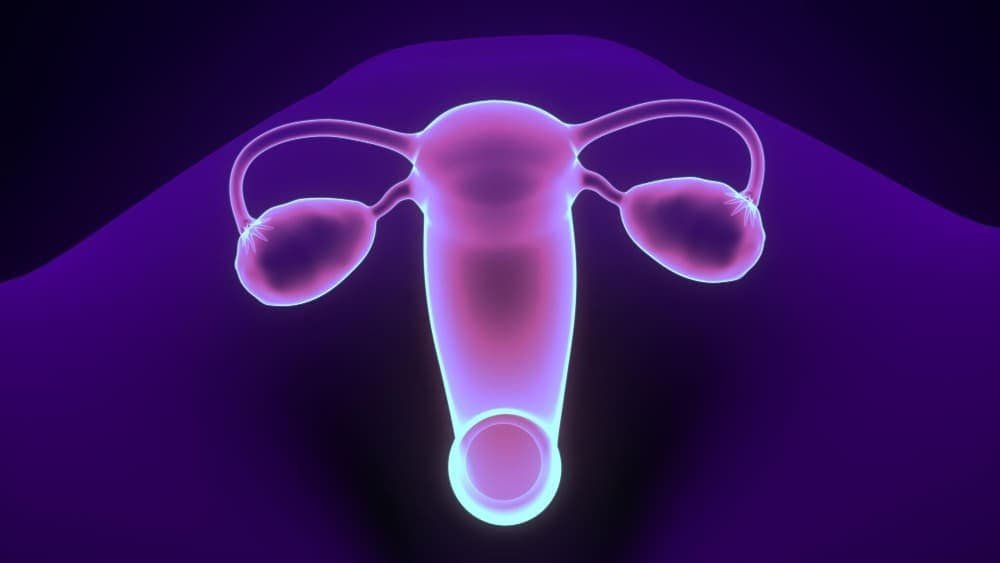Many women struggle silently before learning the truth about getting pregnant with adenomyosis. After months of pain and uncertainty, understanding this condition and the right treatment can restore hope and open the door to a healthy future family.

✅ What Is Adenomyosis and Why Does It Affect Fertility?
Adenomyosis happens when the inner lining of the uterus grows into the uterine muscle wall. This tissue reacts to hormones just like normal uterine lining, causing:
- Pelvic pressure
- Enlarged uterus
- Heavy, painful periods
- Spotting between cycles
This condition is often found in women in their 30s and 40s, but it can affect younger people as well. It’s sometimes called a “sister” condition to endometriosis, as they can share similar symptoms and even occur together, but they are distinct conditions. In endometriosis, the tissue grows outside the uterus, affecting other organs.
Because the uterus becomes inflamed and thick, conceiving naturally can be harder, especially for women who also have endometriosis or fibroids.
Studies suggest that adenomyosis can affect fertility by:
- Disrupting embryo implantation
- Increasing inflammation
- Affecting blood flow to reproductive organs
- Increasing miscarriage risk
Still, many women do conceive — with the right strategy and early diagnosis. ✅
How Adenomyosis Can Affect Fertility and Pregnancy 🤰
The primary concern for many women is the impact of adenomyosis on their ability to conceive and maintain a healthy pregnancy. The condition presents several fertility challenges:
- Difficulty Conceiving: Adenomyosis can make it harder to get pregnant naturally. The inflammation and structural changes in the uterine wall can disrupt the transportation of the egg and sperm and interfere with the implantation of a fertilized egg. Studies have shown that women with adenomyosis may have lower success rates with treatments like IVF.
- Increased Risk of Miscarriage: The condition is associated with a higher risk of miscarriage, particularly in the first trimester. The altered uterine environment can make it difficult for a pregnancy to thrive.
- Pregnancy Complications: For pregnant women with adenomyosis, the journey requires careful monitoring. The condition increases the risk of several obstetric complications, including preterm birth (birth before 37 weeks), preeclampsia (high blood pressure during pregnancy), and issues with the placenta. There’s also a higher chance of needing a Cesarean birth and experiencing postpartum hemorrhage (heavy bleeding after birth).
While these risks are real, it’s crucial to remember that many women with adenomyosis have successful pregnancies and deliver a healthy baby at term. The key is to manage the condition effectively before and during pregnancy.
Finding Answers: The Importance of Diagnosis
If you suspect you have adenomyosis, getting an accurate diagnosis is critical. A definitive diagnosis used to require a hysterectomy (the surgical removal of the uterus), but modern medical imaging has changed that. Today, specialists can diagnose the condition non-invasively:
- Transvaginal Ultrasound: This is often the first step. A trained sonographer can identify tell-tale signs of adenomyosis, like a globular or enlarged uterus and an indistinct border between the endometrium and myometrium.
- Magnetic Resonance Imaging (MRI): An MRI provides a more detailed view of the uterine wall and is highly effective at confirming a diagnosis and distinguishing adenomyosis from other conditions like uterine fibroids.
An early diagnosis of uterine adenomyosis allows you and your doctor to explore the best treatment options to manage your symptoms and support your fertility goals.
Exploring Your Treatment Options to Improve Fertility
When it comes to treating adenomyosis, the goal is to reduce symptoms and improve uterine health, especially if you want to become pregnant. Here are some common treatment options:
- Medical Therapies: Hormonal treatments like birth control pills or GnRH agonists can help manage heavy, painful periods by suppressing menstruation. However, these are not a permanent solution, and you cannot conceive while using them.
- Conservative Surgery: In some cases, surgeons can remove localized areas of adenomyosis (an adenomyomectomy). However, this can be a difficult surgery and may not be a proven or fully effective long-term solution.
- Hysterectomy: The only definitive cure for adenomyosis is the surgical removal of the uterus. This is a major surgery and is only an option for women who are not planning to have children in the future.
For many patients, especially those who wish to preserve their fertility, these options can feel limiting. Fortunately, there is a highly effective, minimally invasive alternative.
A Safe, Modern Path to Pregnancy: Uterine Artery Embolization (UAE) ✨
For women seeking a non-surgical solution, Uterine Artery Embolization (UAE) is a groundbreaking procedure offered by interventional radiologists like Dr. Samir Abdel Ghaffar. This technique represents one of the most promising treatment options for adenomyosis, especially for those who want to avoid major surgery.
Here’s how it works:
- An interventional radiologist makes a tiny incision, usually in the wrist or groin, to access an artery.
- Using advanced imaging for guidance, a catheter is navigated to the uterine arteries that supply blood to the adenomyosis tissue.
- Tiny particles are injected to block these arteries, cutting off the blood supply to the misplaced tissue.
The tissue then softens and shrinks, leading to a dramatic reduction in symptoms like heavy bleeding and pain. Because the procedure is targeted, the rest of the uterus remains healthy. UAE is a safe and proven procedure that can improve your quality of life and create a more favorable environment for a successful pregnancy.
Tips to Support Your Fertility Journey ❤️
While you explore your medical options, here are some natural tips to support your body and manage your health:
- Work with Specialists: Partner with a team of experts, including a fertility specialist and an interventional radiologist, to create a comprehensive plan.
- Manage Pain and Inflammation: A healthy diet rich in anti-inflammatory foods can help manage pain.
- Seek Support: Connect with other women who share similar experiences. Knowing you’re not alone can make the journey less challenging.
Your Future is Full of Hope
Living with adenomyosis can be difficult, but it doesn’t have to end your dream of becoming a mother. With a proper understanding of the condition, an early diagnosis, and access to modern and effective treatment options like Uterine Artery Embolization, you can manage your symptoms and significantly improve your fertility and pregnancy outcomes.
If you’re ready to explore your options and take control of your health, it’s time to learn more about how interventional radiology can help you on your path to a healthy and happy pregnancy.

 العربية
العربية 

